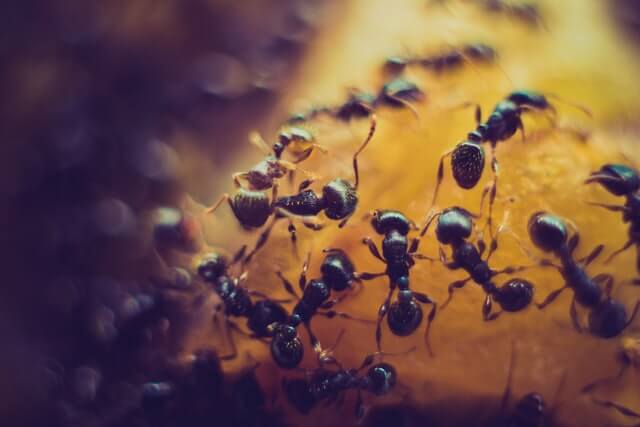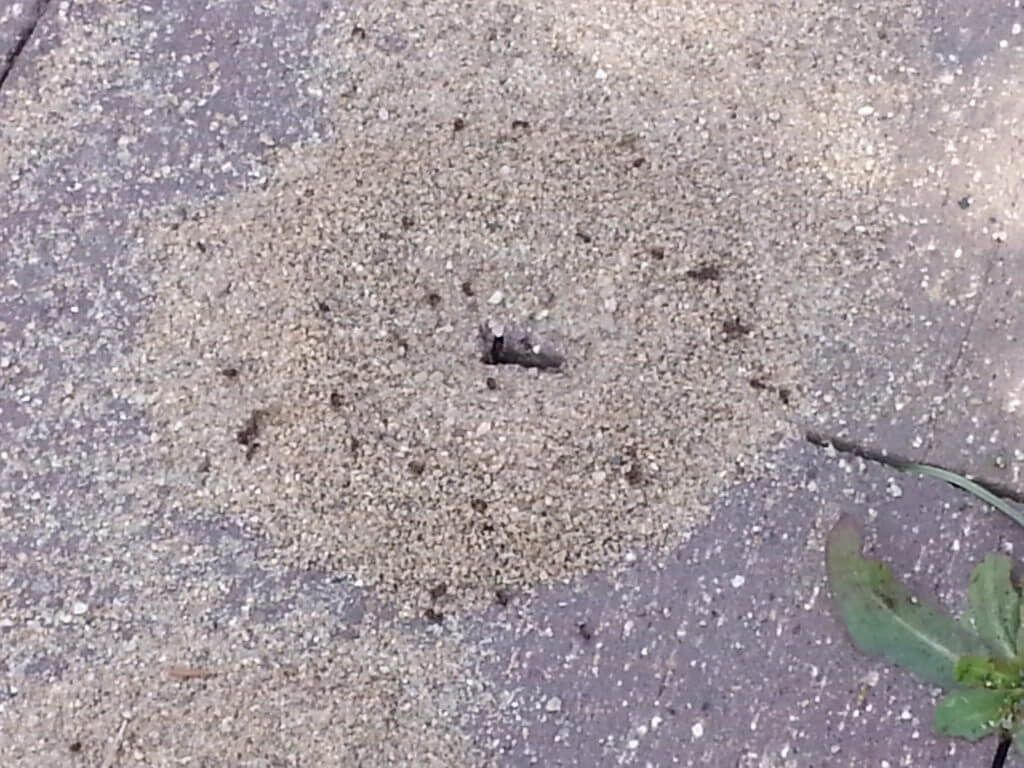Ants

How do I get rid of ants? Did you know that there are seven ant species in California that are most common (argentine , southern fire, California harvester, velvety tree, carpenter, odorous house, pavement, and the black harvester).
The most common ant in California is the argentine ant.
Argentine ants may be one of the few ants whose colonies don’t fight each other. Each ant knows it belongs to a distinctive colony, but will not fight an argentine ant from another colony.
Argentine – Native to Argentina and Brazil was introduced in the 1800’s on coffee ships.
Live in moist areas near a food source
Can have multiple queens in a colony
They are aggressive, will usually eliminate other ant species.
More interesting Facts about Ants

More interesting facts about ants:
Did you know that ants usually nest in the top 6 feet of soil when nesting in the ground?
Ants are social insects, they live in colonies where there is a division of labor among the colony members. Ants may have sub-colonies. The ants have 3 distinct castes: workers, soldiers and queens.
Ants are mainly nuisance pests. However, some ants have a rather powerful sting like the fire ant for instance.
Some ants such as the carpenter ant can do damage to your home by hollowing out a place in the wood for their nest. Ants use their mandibles for almost everything; biting, pricking, piercing, cutting off heads, building, sawing, gnawing, cutting, carrying, leaping and even bounding, but never for eating.
How and what do ants eat?

FEEDING HABITS
Most ants are omnivorous which means they eat almost anything, including insects, honeydew, sweets, greases, oils, vegetables, and bread. Once food is found they leave a pheromone trail to lead others to the food source.
Ants have a very narrow esophagus that will not admit even chewed up particles of food. So the chewed up food is fed to the larvae. The larvae then digest and regurgitate it for the adults to eat. Ants will only send out 10-12% of the colony to forage for food.
How do we stop ants in their tracks?

